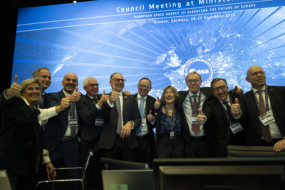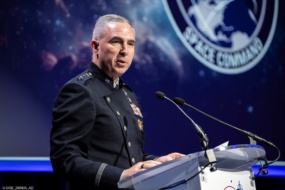The fast-evolving orbital environment in the age of private space presents new challenges for nuclear strategy. In response, the Secure World Foundation and Carnegie Corporation of New York are starting a new program to bring together experts from both disciplines.
Early next year, the program—dubbed “Strengthening Strategic Stability at the Nexus of Space and Nuclear Security”—will kick off with the first of two formal dialogs. The program will also organize a “boot camp” for early career nuclear security professionals, to help them understand the space ecosystem.
Raison d’etre: “The two communities don’t cross-pollinate very often,” Victoria Samson, SWF’s chief director for space security and stability, told Payload, adding that private actors add a new wrinkle: “They truly don’t understand how much commercial space is affecting stability in orbit, and the commercial industry has not quite wrapped [its head] around how it could incite a destabilizing incident.”
Action stations: Besides the pure proliferation of spacecraft in LEO, we’re also seeing an increasing number of satellites doing work for military and civil customers. That means a non-state actor could potentially do something in orbit that might alarm nuclear states back on Earth.
Whether they are military officers, diplomats, academics, or independent analysts, people dealing with nuclear issues need to understand what’s possible in space, while space actors need a better understanding of how they might surprise watchers below.
Heads up: States including Russia and China have issued veiled warnings about the use of commercial satellites at international fora, Samson said, and Russia recently launched a prototype weapon thought to be a nuclear powered electromagnetic pulse weapon—ideal for taking out proliferated satellite constellations.
“Were Russia ever to use such a system, it would have a devastating effect on commercial space systems,” James Acton, who co-directs the Carnegie Endowment for International Peace’s nuclear policy program, told Payload. He added that while today’s nuclear command control satellites are in higher orbits, ”In the future, LEO may play a bigger role in nuclear command and control, [and] as a result, commercial space operations in LEO could exacerbate nuclear risks.”




